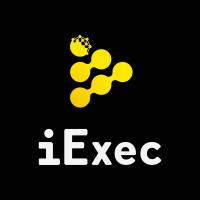Descrption:Cardano is a decentralised public blockchain and cryptocurrency project and is fully open source. Cardano is developing a smart contract platform which seeks to deliver more advanced features than any protocol previously developed. It is the first blockchain platform to evolve out of a scientific philosophy and a research-first driven approach. The development team consists of a large global collective of expert engineers and researchers
Cardano is a decentralised public blockchain and cryptocurrency project and is fully open source.
v1
Principle and design goals
Cardano is a project that began in 2015 as an effort to change the way cryptocurrencies are designed and developed. The overall focus beyond a particular set of innovations is to provide a more balanced and sustainable ecosystem that better accounts for the needs of its users as well as other systems seeking integration.
In the spirit of many open source projects, Cardano did not begin with a comprehensive roadmap or even an authoritative white paper. Rather it embraced a collection of design principles, engineering best practices and avenues for exploration. These include the following:
- • Separation of accounting and computation into different layers
- • Implementation of core components in highly modular functional code
- • Small groups of academics and developers competing with peer reviewed research
- • Heavy use of interdisciplinary teams including early use of InfoSec experts
- • Fast iteration between white papers, implementation and new research required to correct issues discovered during review
- • Building in the ability to upgrade post-deployed systems without destroying the network
- • Development of a decentralized funding mechanism for future work
- • A long-term view on improving the design of cryptocurrencies so they can work on mobile devices with a reasonable and secure user experience
- • Bringing stakeholders closer to the operations and maintenance of their cryptocurrency
- • Acknowledging the need to account for multiple assets in the same ledger
- • Abstracting transactions to include optional metadata in order to better conform to the needs of legacy systems
- • Learning from the nearly 1,000 altcoins by embracing features that make sense
- • Adopt a standards-driven process inspired by the Internet Engineering Task Force using a dedicated foundation to lock down the final protocol design
- • Explore the social elements of commerce
- • Find a healthy middle ground for regulators to interact with commerce without compromising some core principles inherited from Bitcoin
Technology implementation
Consensus mechanism
Proof of Work and Mining
Proof of work is the most common consensus algorithm type for cryptocurrencies. It originated in Bitcoin, and this is how this cryptocurrency works. To generate proof of work, a computer has to solve a challenge. The challenge is a computationally heavy problem which is hard to solve, but the solution is easy to verify. When a computer on a proof of work based network finds a solution, it publishes it along with the transactions that the computer has been observing while cracking the problem. The owner of this computer collects the transaction fees and a reward for generating a block. The entire process is called mining. Mining is very energy consuming, and the amount of energy needed is constantly increasing, which can lead to unsound competition.
Proof of Stake and Minting
Proof of stake is a novel approach to block generation. IOHK scientists led by Prof. Aggelos Kiayias have designed the first provably secure proof of stake algorithm called Ouroboros. Ouroboros lies at the heart of Cardano SL. Research team has published a white paper that is a worthy read for anyone with a background in cryptocurrency theory. The core idea of proof of stake is that instead of wasting electricity on cracking computationally heavy problems, a node is selected to mint a new block, with a probability proportional to the amount of coins this node has. If a node has positive (> 0) stake, it is called a stakeholder. If a node eventually becomes chosen to mint a block, it is called a slot leader. You can read more about this process in Proof of Stake in Cardano SL.
Accounts and transactions
A transaction (tx) is a special data which represents the act of the value
transferring between nodes (from the user’s point of view, transferring between
wallets). Thus, when the user Alice sends money to the user Bob, the new
transaction emerges. Let’s call this transaction Tx1, the node under Alice’
wallet N1, and the node under Bob’s wallet N2.
Thus, the node N1 does the following steps:
- Creating transaction
Tx1and signs it with its private key. - Sending it to all known nodes (i.e. neighbors).
- Saving it in its local data.
Each of N1’s neighbors sends Tx1 transaction to its neighbors and so on, and
some slot leader will store this transaction in some block in the ledger. Please
note that if the network is under high load, it may take a lot of time for
transaction to be actually added to the block.
Smart contract system
Cryptography
Distributed storage protocol
Cross-chain and exchange technology
Special technology
What Makes Cardano SL Special?
While there are similarities between Bitcoin and Cardano SL, there are also many differences between these two cryptocurrencies. The most significant difference is that Bitcoin is a proof of work type cryptocurrency, while Cardano SL makes use of a proof of stake approach to reach consensus. This encourages honesty and long term participation.
Purpose of a Consensus Algorithm
Consensus algorithms are used to produce new transaction blocks, resulting in an updated state of the ledger. Whenever someone publishes a block of transactions, they — or rather, their node that runs the cryptocurrency protocol — have to attach a proof that they have merited it. Below two types of such proofs are discussed.
Proof of Work and Mining
Proof of work is the most common consensus algorithm type for cryptocurrencies. It originated in Bitcoin, and this is how this cryptocurrency works. To generate proof of work, a computer has to solve a challenge. The challenge is a computationally heavy problem which is hard to solve, but the solution is easy to verify. When a computer on a proof of work based network finds a solution, it publishes it along with the transactions that the computer has been observing while cracking the problem. The owner of this computer collects the transaction fees and a reward for generating a block. The entire process is called mining. Mining is very energy consuming, and the amount of energy needed is constantly increasing, which can lead to unsound competition.
Proof of Stake and Minting
Proof of stake is a novel approach to block generation. IOHK scientists led by Prof. Aggelos Kiayias have designed the first provably secure proof of stake algorithm called Ouroboros. Ouroboros lies at the heart of Cardano SL. Research team has published a white paper that is a worthy read for anyone with a background in cryptocurrency theory. The core idea of proof of stake is that instead of wasting electricity on cracking computationally heavy problems, a node is selected to mint a new block, with a probability proportional to the amount of coins this node has. If a node has positive (> 0) stake, it is called a stakeholder. If a node eventually becomes chosen to mint a block, it is called a slot leader. You can read more about this process in Proof of Stake in Cardano SL.
Economic model and incentive
Governance mechanism
Applications
Contributors
No contributors information for the version. to see perfessional version!
Comment
| Rank | Blochchain | Similarity |
|---|---|---|
|
1st
|
ARK
|
29.301260000000003% |
|
2st
|
PPC
|
23.081665% |
|
3st
|
XAS
|
23.048348% |
|
4st
|
BOS
|
21.05421% |
|
5st
|
BCN
|
20.994815% |
No analysis results for the version. to see perfessional version!
| Rank | Blochchain | Similarity |
|---|---|---|
|
1st
|
TKY
|
4.5279% |
|
2st
|
RLC
|
3.5166999999999997% |
|
3st
|
XTO
|
2.566% |
|
4st
|
Libra
|
2.5556% |
|
5st
|
TRUE
|
2.4574% |
Name:
Company:
Email:
Location:
Repos:
Followers:











